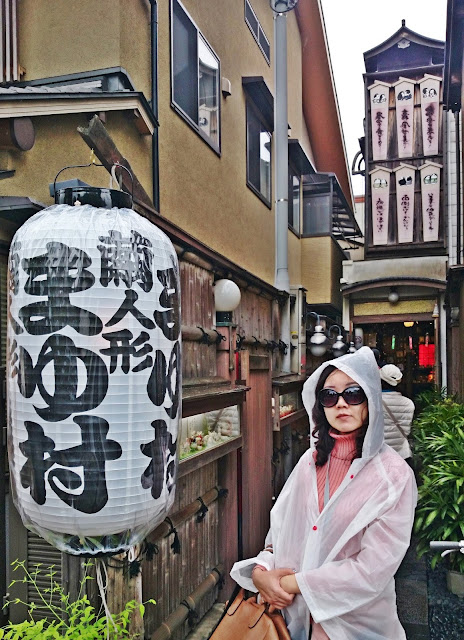One of the problem with big groups is you need to wait for other members in order for not having them to wait for you.


While the guide looking for other missing members...
Found this unique silk cocoons handicraft store opposite the temple.
OMG!!! Cocoonies cute animals and 12 Zodiac!
Wanted to buy for kiddos, but the price quite expensive...
so didn't buy after considering that they will only like them for few days.

Going to Tenryuji temple ground before walking to Bamboo forest.
Tenryū Shiseizen-ji (天龍資聖禅寺).
"Tenryū" literally means "dragon of the sky". The temple was founded by Ashikaga Takauji in 1339, primarily to venerate Gautama Buddha.
It was registered as a UNESCO World Heritage Site in 1994 as part of the "Historic Monuments of Ancient Kyoto". This temple is held in high esteem, and is ranked number one among Kyoto's so-called Five Mountains. It's main temple landmark in Arashiyama.
Chokushi gate (勅使門).
Chokushi gate is a one-storey gate, constructed in yotsuashimon style. It is the oldest structure on the temple grounds and is representative of the style of the Momoyama Period.
Generally, Zen temple grounds are designed so that they face the
south, with major buildings aligned along the north-south axis.
Tenryū-ji's layout is an exception to this principle.
Sub-temples line both sides of the path leading to...
The lecturer hall.
The
teaching hall is located at the center of the temple grounds, which is
unusual for a Zen temple. The extant version is a 1900 reconstruction.
It contains an image of Gautama Buddha, flanked by two guardians. The
decorative painting of a dragon on the ceiling called Unryū-zu (雲龍図 = image of the cloud dragon) is the work of Suzuki Shōnen.
Red torii (鳥居 = Shrine gate).
It's traditional Japanese gate mostly found at the entrance of or within a Shinto shrine.
Torii gate also symbolically marks the transition from the profane to the sacred place. The presence of a torii at the entrance is usually the simplest way to identify Shinto shrines.
It's commonly found standing at the entrance of Japanese Buddhist temples too.
The temple's own shrine, called chinjusha and are usually very small.
Torii is similar to Hongsal-mun (Red Gate) in Korea.
Sogenchi garden.

Tranquil Tenryuji Temple.
Nice and artistic architecture.
The guide told us that we're not entering the temples and gardens here as tomorrow we are going to visit another big shrine. Admission fees are applicable if you want to enter the temples and stunning zen-style gardens which is known for its shakkei (借景 = borrowed scenery).
The temple is located at the main road between Togetsukyo Bridge and Arashiyama Station.
Tenryuji temple
Add: 68 Sagatenryūji Susukinobabachō, Ukyō-ku, Kyōto-shi, Kyōto-fu 616-8385, Japan.















